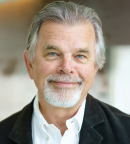
Robert A. Hiatt, MD, PhD
In 2021, The ASCO Post had a wide-ranging discussion with Robert A. Hiatt, MD, PhD, Professor in the Department of Epidemiology and Biostatistics at the University of California, San Francisco (UCSF), and Associate Director of Population Sciences at UCSF Helen Diller Family Comprehensive Cancer Center, about the implications of climate-related events and their impact on cancer care for patients. (See “How Climate Change Is Impacting Cancer Care and What Can Be Done to Reduce Oncology’s Footprint on the Environment” in the August 10, 2021, issue of The ASCO Post.)
Here we continue the conversation with an examination of how climate change is influencing the development of cancer, disproportionately affecting low-income communities, and sparking efforts to build resiliency into our societal and health-care systems.
The Results of a Warming Planet
You have written about how a warming planet results in increases in environmental exposures to ultraviolet radiation, air pollution, toxicants, and infectious agents.1 Please talk about how these exposures influence the development of cancer.
Increased air pollution is the result of a warming planet. Air pollution contains fine particulate matter (PM2.5), and these microscopic particles are easily inhaled into the human lungs. These particles carry carcinogens. Emissions from wildfires contain fine particulate matter, too, as well as elevated levels of metals and volatile organic compounds; they come not just from the burning forest, but from burning homes, appliances, and cars.
The other principal mechanisms through which climate change is likely to contribute to cancer risk and cancer control efforts is through exposure to increased levels of ultraviolet radiation. Such exposure will lead to a rise in skin cancers; disruptions in the food and water supplies; and major disruptions in the infrastructure of health-care systems for cancer control and prevention.
But before people can develop cancer from these environmental changes, they are dying of extreme heat. According to the United Nations, extreme heat has emerged as the deadliest weather-related killer worldwide.2
Inequities in Cancer Care Caused by Climate Change
How is climate change becoming a social determinant of health?
I’m an epidemiologist, so I think a lot about the distribution of cancer in different populations. We’ve known for a long time that cancer is not experienced equally by people around the world. And why is that? It’s not because people differ vastly genetically, so the reason has to be environmental.
Climate change is exacerbating existing social and economic inequities, which is leading to rising rates of migration, poverty, and conflict, putting individuals at greater risk for differing health outcomes. For example, low-income communities and minority populations are disproportionately affected by cancer and have a higher mortality rate than individuals who have a higher socioeconomic status. And displaced persons have little access to health-care services, and they are often diagnosed with more advanced stages of cancer. Research and action to address cancer and climate change must include analyses of the adverse effects of climate change on the social determinants of cancer.
The Effects of Climate Change on Cancer Care
How can society, and specifically the oncology community, take a more active role in helping to mitigate the effects of climate change on cancer care?
There are many ways that we as individuals and as a society can act to reverse the trends we are seeing in global warming. There is progress in producing goods that are recyclable and less toxic to the environment, and those efforts should be encouraged. Adhering to established cancer prevention and early-detection strategies in conjunction with effective public health education activities may reduce the increased cancer risk that might result from climate change. So, everyone can make a little contribution to alter the health risks from a warming planet.
Oncologists can play an even bigger role by influencing the health-care systems they work within to reduce the amount of greenhouse gas emissions produced by imaging devices and radiation therapy equipment. For example, they can encourage use of more energy-efficient computed tomography and magnetic resonance imaging machines.
In addition, oncologists can use energy in a more sustainable way throughout the health-care system. For example, they can avoid duplication in cancer care follow-up from multiple oncology subspecialties and primary care; help to enact policies to increase public transportation and encourage walking or cycling to cancer centers; and use telehealth for clinical appointments when possible. All of these efforts may help to reduce the environmental impact on climate change and decrease cancer risk.
However, in addition to mitigation efforts, we also need to increase our efforts to adapt to climate change by adjusting behavior, infrastructure, and policies to become more resilient to current and future climate impacts. But this is one aspect of human behavior that’s very difficult to implement.
I’m hoping that with the increasing examples of the impact greenhouse gases are having on the environment, the public will be more inclined to support mitigation and adaptation activities that will build more resiliency into our societal and health-care systems. We just have to keep beating the drum to succeed.
DISCLOSURE: Dr. Hiatt reported no conflicts of interest.
REFERENCES
1. Hiatt RA, Beyeler N: Lancet Oncol 21:e519-e527, 2020.
2. United Nations Office for Disaster Risk Reduction: GAR 2025 hazards: Extreme heat. Available at www.undrr.org/gar/gar2025/hazard-exploration/extreme-heat. Accessed October 8, 2025.

